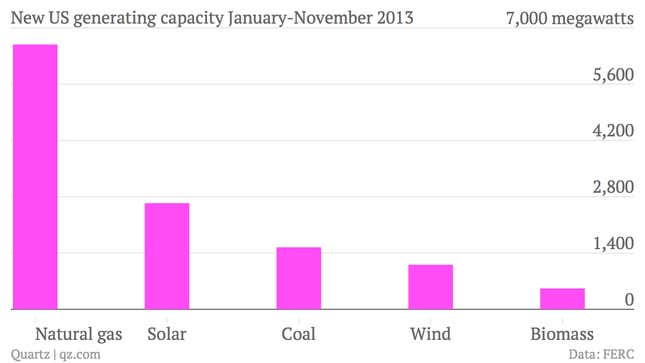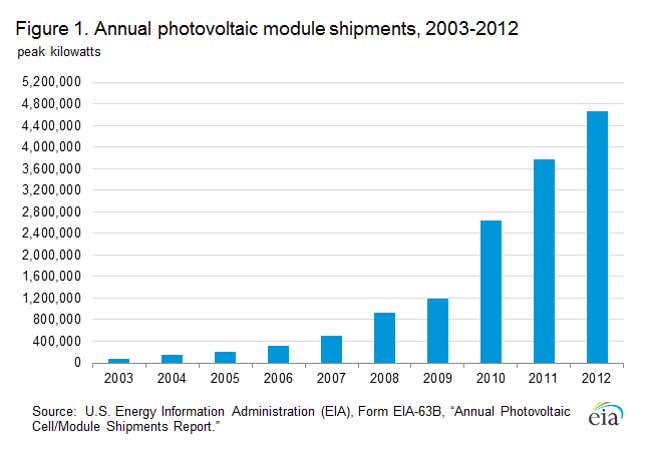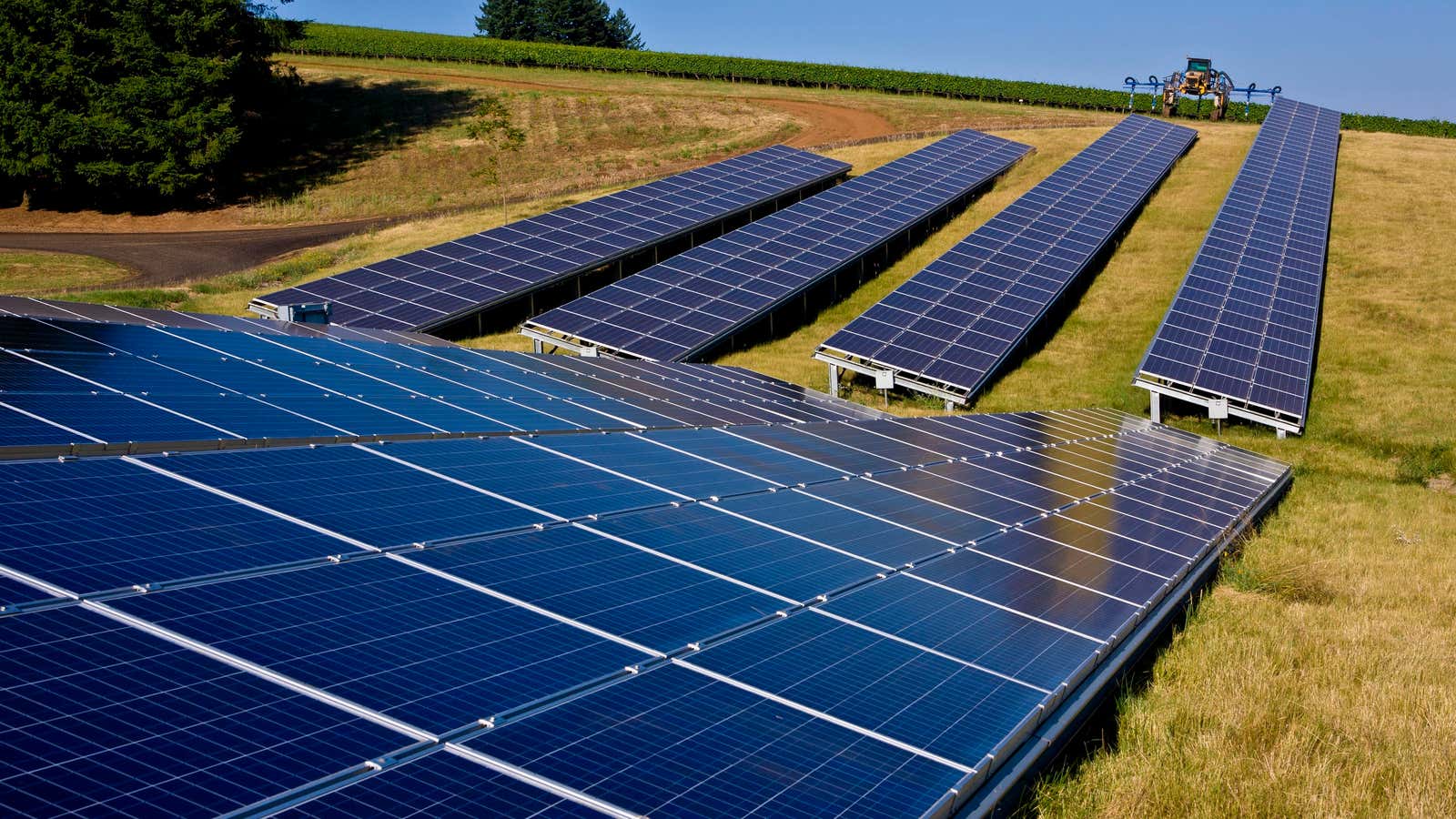The solar industry is on track for another record year in the US. In November solar accounted for 45% of all new electricity generating capacity that came online in the US (none was from fossil fuels.) So far this year, 21% of all new capacity has come from solar, second only to natural gas. Coal’s share? 12%.

What’s more, there are 43,000 megawatts (MW) worth of photovoltaic projects expected to be built over the next three years. All this has undoubtedly created thousands of jobs marketing and installing solar panels. Yet overall employment in the US solar industry fell 20% between 2011 and 2012, according to a report from the US Energy Information Administration (EIA), even as shipments of photovoltaic panels jumped 23%.

What gives? In short, like many other American businesses, solar is changing from a manufacturing to a service industry. With intense competition from Chinese photovoltaic manufacturers, a number of US companies have gone bankrupt in recent years—most infamously Solyndra. Other startups focused on developing advanced solar technology ran out of money and either went out of business or were acquired by Chinese companies. As a result, photovoltaic manufacturing declined 38% in the US in 2012, according to the EIA.
Imports of solar panels, on the other hand, surged by 61% while exports rose by a modest 3%. And despite the Obama administration’s imposition of high tariffs on Chinese-made photovoltaic cells, imports from China rose 12% in 2012, and supplied 35% of the US market.
However, the numbers may not be as straightforward as they seem. For instance, 33% of panels imported to the US came from Malaysia. That also happens to be where one of the US’ leading solar companies, First Solar, operates most of its factories. And 8% of imports originated in the Philippines, where another US solar giant, SunPower, makes its photovoltaic panels. Nearly half of all solar shipments were destined for California.
So while they’re not directly creating too many jobs in the US, the remaining US panel-makers aren’t doing badly. And they stand to do even better in the near future from the biggest market for US solar panels: Japan, which accounted for nearly a quarter of US exports. In the wake of its 2011 nuclear meltdown, Japan embarked on a renewable energy building boom, offering generous subsides for solar installations.




